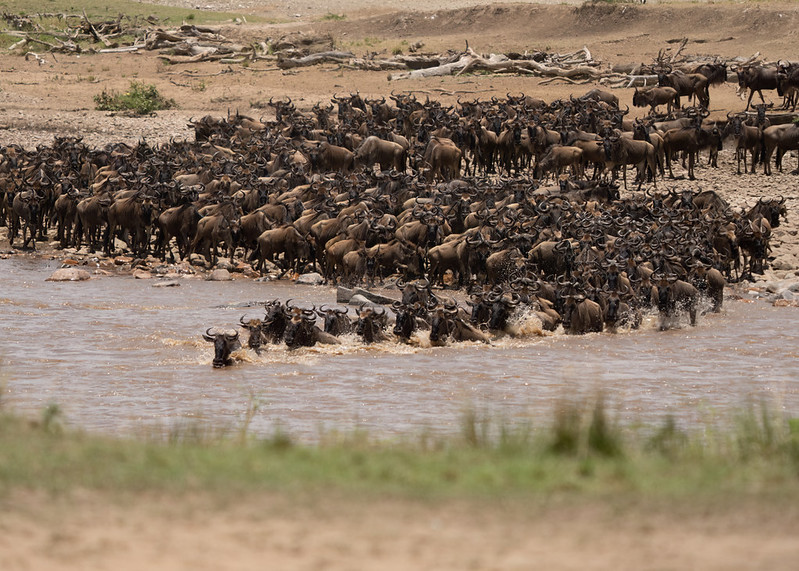
The Best Time to Visit Kenya
Due to the animals congregating at water holes due to the lack of rain, which makes them easier to identify, the best time to visit Kenya is during the dry season, which runs from late June to October. In Kenya, this is the busiest time of year for safaris. The yearly migration of wildebeests typically arrives in the Masai Mara sometime in July and remains there until October, when they make their way back to Tanzania’s Serengeti.
Plan to be in Masai Mara in late July if you want to be sure to see the migration. The knowledgeable guides at Adventure in the wild Safaris will monitor the migration and ensure that you witness the entire show, which is one of the world’s finest wildlife spectacles.

If expense is an issue, however, bear in mind that traveling to Kenya in March, April, and May—during the so-called “long rains”—is significantly less expensive. There are additional advantages, such as less crowds and often better lighting for photos.
Kenya enjoys a great year-round climate with days that are sunny and dry and average temperatures between 68° and 77°F. But the seaside resorts can get humid, even though the Indian Ocean wind helps to cool things down, and the higher areas can get extremely chilly (recall Ernest Hemingway’s “Snows of Kilimanjaro”).
In general, the seasons are as follows: warm and wet during the “long rains” from April to June, warm and dry from July to October, and warm and wet from mid-November to early December during the “short rains.”
Why travel to Kenya from June to October, the country’s dry season
- Because there is little undergrowth and animals congregate near water, it is easier to spot wildlife.
- There is rarely rain during the day, and all of the lodges and safari camps are available to visitors.
- Mozzies are less prevalent.
- The ideal months to see the annual wildebeest migration are July through October.
Why travel to Kenya in April and June and throughout the Wet Season, October through December
- The scenery is lovely and verdant.
- Because it’s the off-season, rates are lower.
- There are lots of newborn animals.
- The busiest parks are not as full.
- You can witness migratory birds from September until April.
- With the exception of March through May, precipitation are usually brief afternoon showers.
- Clear seas are ideal for diving and snorkeling in November and March at the coastal beach resorts.
Month-by-Month Best Time to Visit Kenya
January
Kenya experiences long, scorching days in January. Large mammals come out into the open due to the low river levels and yellowing grasses. At the watering holes, both prey and predator gather, so you may see unexpected neighbors. With bright days and clear sky, the seashore is at its most tranquil.
February
In Kenya, February is one of the hottest months, and there is a lot of animals around the watering holes. near any sources of water that are accessible. For those who enjoy sunbathing, diving, and boating, the Kenyan coast is still bright and somewhat uncrowded.
March
March brings calving expectant moms and sly predators hiding in wait. They have to hunt in the open, in the exposed bush because the plains are at their driest and the grass is short. Storms change the horizon towards the end of the month, yet even during the rainy months, it rarely rains for longer than a day.
April
The rains of April bring with them verdant forests and lush grasslands, and the horizon is dotted with vibrant rainbows. Visitors to safaris can see lions towering close by and calves galloping beside big herds. April is a thrilling month for birdwatchers as well, with hundreds of species passing through.
May
In May, there are more evening showers and predators might blend in with the blooming foliage. May is a great time for butterfly aficionados to capture the African monarch with their camera.
June
June is when Kenya’s dry weather returns. Exciting game drives are made possible by the plentiful supplies of food and water available for both predators and prey. Photographs turn out better too since there is less dust in the June air.
One of Kenya’s most breathtaking sights, the wildebeest migration, begins in July. A gradual trickle of wildebeest from Tanzania’s Serengeti go north, followed by a flood of thousands. Predators enjoy the abundance as vultures soar overhead and lions circle the plains.
August
Crocodiles feast on the unfortunate individuals who fail to cross the rivers during the wildebeest migration across the Masai Mara. In the Northern Kenyan parks, like Samburu National Reserve, where game is drawn to diminishing water supplies, August is also a great month to see wildlife.
September
Wildlife abounds in the Masai Mara as the days grow warmer. Following the animals as they go is a wonderful journey when you explore the terrain with your guide, including all of its pathways and side routes.
October
The wildebeest migrate south once more in October, navigating the dangerous waterways in the proximity of predators. The wind sifts dust across the plains of Kenya, turning the sky a murky yellow. On the other hand, beach resorts along the Indian Ocean’s crystal blue waters make it the perfect time for divers.
November
The country is enveloped in lush vegetation when the brief showers begin. Kenya’s parks are serene and delightfully less congested at this time of year, while the rivers are home to a variety of bird species.
December
December sees a small increase in temperature as the brief showers end. During this time, the land is at its most breathtaking, with lush meadows and trees in full bloom everywhere you look.




